FAYINWBO Solar Ultrasonic Animal Repeller with Siren and Flashing LEDs for Yards and Gardens
$49.99
Stop night raids and garden digs with the FAYINWBO Solar Ultrasonic Animal Repeller. This motion-activated unit uses a PIR sensor to trigger adjustable ultrasonic sound, bright flashing LEDs, and an optional siren, so cats, raccoons, and curious dogs get the message quickly without chemicals. Five easy modes let you tune sensitivity and frequency, and the built-in solar panel keeps it ready for nightly patrols. Independent research shows well placed ultrasonic deterrents can reduce cat incursions in gardens, which is why I pair this solar, light, and sound combo with smart placement for best results.
Description
If you have cats digging up new beds, a bold raccoon testing your trash lids, or a curious dog squeezing through the hedge, the FAYINWBO Solar Ultrasonic Animal Repeller with Siren and Flashing LEDs for Yards and Gardens gives you a humane, hands-off way to reclaim your yard. It pairs a solar-charged power system with motion-activated ultrasonic sound, a built-in siren, and bright strobing LEDs, so intruders get a clear “not here” signal without chemicals or traps.
As a pest-control specialist, I appreciate that this unit combines multiple deterrents in one small, weather-ready body. Listings and reseller pages describe a passive infrared (PIR) sensor that scans a wide arc, adjustable sound levels, and a waterproof housing, which are exactly the practical features you need outdoors in real weather. That combination is designed to startle animals the moment they enter the detection zone, using light and sound together for better results than sound alone.
Key Customer Benefits
- Hands-off, humane protection for busy homeowners: The FAYINWBO ultrasonic animal repeller uses a motion sensor, high-frequency sound, strobing LEDs, and an optional siren to warn animals away without chemicals, traps, or risky confrontation. Humane groups consistently recommend starting with deterrents like light and sound while you also remove food and shelter that attract wildlife, which is exactly where a motion-activated unit shines.
- Layered deterrence works better than sound alone: Independent field evidence shows that using light and sound together can reduce predator visits in some contexts, and controlled studies on garden cats found ultrasonic devices cut intrusions substantially when they were placed and aimed well. This unit gives you both tools in one device, so you can create a quick startle response when an animal crosses into the protected area. Results will vary by species and site, which is normal for wildlife behavior, but combining modalities improves your odds.
- Solar charging means fewer battery swaps and more uptime: The FAYINWBO is built for set-and-forget solar charging, so you do not have to babysit batteries. Listings for this model family highlight the solar panel, on-device charge indicator, and multi-mode controls, which are exactly the practical touches you want for long outdoor duty.
- Smart motion detection targets real movement, not thin air: A passive infrared sensor looks for the warmth of a moving animal against the background, which helps avoid constant false alarms from waving leaves alone. PIR is the same reliable technology used in outdoor lights and alarms, and it is well understood in security hardware.
- Weather-ready design for yards, gardens, and driveways: Outdoor electronics are marketed with ingress protection language for dust and water resistance. While sellers for this device describe waterproof use, the broader rule of thumb is that IP ratings explain what kind of moisture a case can handle, like splashes or jets. If a listing states a specific IP code, you can interpret it accurately using published guidance, then site the unit in a place with good sun and drainage.
- Flexible modes you can tune to your target animal: FAYINWBO listings show five selectable modes and sensitivity levels, letting you start with gentler settings and only escalate if needed. Gardeners report that dialing in sensitivity and aiming the sensor across open approaches makes a clear difference, especially for raccoons, cats, and small wildlife that test boundaries at night. This lets you adapt the device to your space rather than living with a one-size-fits-all blast.
Product Description
What the device is
The FAYINWBO Solar Ultrasonic Animal Repeller with Siren and Flashing LEDs for Yards and Gardens is a compact, weather-ready unit that pairs motion-triggered ultrasound with bright strobe LEDs and an optional siren. Seller listings for this model family describe a built-in solar panel for day-to-day charging, a passive infrared motion sensor, multi-mode frequency settings, and hardware for hanging or staking the device in a yard or garden. In short, it is a layered deterrent that uses light and sound to persuade animals to turn around before they damage beds, scatter bins, or mark doorways.
How it works
Inside the housing is a passive infrared, often called PIR, sensor that looks for a warm body moving across its field of view. When a cat, raccoon, or dog enters the zone, the sensor sees a change in infrared energy and flips the repeller into action. That triggers an ultrasonic speaker at selected frequencies, the strobe LEDs, and, if you choose, a siren burst. PIR is the same mature technology used in many outdoor lights and alarms, and it is designed to respond to movement from warm-blooded animals rather than swaying branches alone.
Outdoors, “weatherproof” claims are often described with an IP, or ingress protection, rating that tells you exactly how resistant a case is to dust and water. If a seller quotes an IP code for this unit, you can interpret it using the IEC’s own descriptions, or practical guides from engineering vendors and consumer tech outlets. This helps you choose the right mounting spot, ideally with sun exposure for charging and good drainage, rather than tucking the unit under a downspout.
Why layered deterrence is more effective than sound alone
There is peer-reviewed evidence that ultrasonic deterrents can reduce unwanted cat visits in gardens. A study published in Applied Animal Behaviour Science reported that ultrasonic devices cut the frequency of incursions by about 46 percent and shortened visit duration by about 78 percent in the test gardens.
A separate trial found a moderate deterrent effect across dozens of gardens, which is consistent with what professionals see in the field. The takeaway is not that ultrasound is magic, rather that it can be a helpful tool when it is placed well and paired with other cues that matter to animals. The FAYINWBO gives you those cues in one body, since you can add bright flashes and a siren burst to amplify the “time to leave” moment.
Light can matter on its own. Conservation summaries of non-lethal tools note that using lights and sound together can reduce predation pressure in some contexts, and wildlife control specialists frequently recommend motion lighting for night-active species that prefer cover. That is relevant for raccoons, which rely on darkness and stealth when they nose around bins and compost. A sudden flood of light or a strobe can startle them and remove the cover they want.
What makes this unit feel different in day-to-day use
From a practitioner’s point of view, three things stand out. First, solar charging reduces battery babysitting, which keeps the deterrent active during the very hours when animals test boundaries. Second, the PIR sensor helps focus the response on real movement, which can reduce nuisance activations. Third, the multi-mode control means you can tune frequency ranges and sensitivity, then add or remove the siren, so you can escalate only if your visitors ignore lighter settings. These are the everyday practical touches described across FAYINWBO listings for this model line, and they align with how we actually deploy devices in gardens, around patios, and near bin areas.
Product Specifications
| Feature | Details |
|---|---|
| Model name shown on listings | FAYINWBO Solar Ultrasonic Animal Repeller, Green |
| Deterrent types | Ultrasonic speaker, bright white flashing LED strobe, optional audible siren |
| Sensing technology | PIR motion sensor |
| Detection angle | About 110 degrees (horizontal) |
| Detection range | Listed as 20 to 25 feet, and also 6 to 8 meters on the same seller page |
| Frequency and modes | Dial positions with stated bands: 13.5 to 19.5 kHz, 19.5 to 24.5 kHz, and 24.5 to 45.5 kHz, plus two combined modes that add LED flash and alarm |
| Power | Integrated solar panel on top, plus USB charging with a common 5 V adapter |
| Charging time | About 7 hours for a full charge according to seller page |
| Battery | Built-in rechargeable battery. Capacity not listed in current reseller pages |
| Weather resistance | Sellers describe the unit as waterproof for outdoor use. No IP code published on the pages reviewed |
| Housing material | Plastic housing noted on eBay listing |
| Color | Green |
| Dimensions and weight | Package size listed as about 5.7 by 4.5 by 4.4 inches. Item weight listed as about 13.6 ounces on an eBay page |
| Mounting options | Ground stake included. Two hanging holes for fence, tree, or wall mounting |
| In the box | 1 repeller, USB cable, two-section aluminum mounting rod, user manual |
| Barcode on listings | EAN or UPC shown as 0782895151479 on some reseller pages |
How to Use and Install the Device
Before you start
Unbox the FAYINWBO Solar Ultrasonic Animal Repeller and confirm the parts: main unit, stake sections or wall-mount holes, and USB cable. Most solar ultrasonic repellers in this class are designed to be set and forget, but they work best when you give them a full first charge and place them where the sensor can see approaching animals. Seller pages and third-party manuals for similar units emphasize assembling the stake, switching the device on, and choosing a sunny, open location.
Step 1: Fully charge before first use
Solar models benefit from a top-up charge, especially if the box spent time in a warehouse. Place the unit in direct sun for a full day or use the USB lead if the manual allows it. Several solar repeller manuals, including 360-degree models and compact pest repeller booklets, recommend a long first charge, often six to twelve hours, so the battery can handle overnight activity.
Step 2: Plan the placement like a motion alarm
Think of the PIR sensor as a tiny outdoor motion detector. Point it across the path animals use, not straight at a solid barrier. Keep the sensor’s line of sight clear of tall grass and dense shrubs. General security guidance for PIR devices, and manufacturer install notes, stress aiming at approach routes and avoiding obstructions that can cause misses or false alerts.
Step 3: Set the height for animals, not people
Ultrasonic cat and small-animal deterrents rarely belong high up like porch lights. Garden-tested instructions from cat-deterrent groups and product manuals show better results when the sensor sits roughly 8 to 12 inches above ground, or about 20 to 30 centimeters, so the beam intersects a cat, fox, or raccoon head-on. Several brand manuals specify very similar heights, and a wildlife repeller guide even caps wall-mounting at about 12 inches to avoid scanning right over animals.
Step 4: Stake or mount securely
For ground mounting, assemble the stake, press it into firm soil, then attach the head. For wall or fence mounting, use the two keyhole slots on the back and keep the unit level. Manuals for comparable units outline both options and note common hardware spacing. The important part is stability, because a tilted sensor can look into the sky or the dirt.
Step 5: Choose a starting mode and sensitivity
Begin with an ultrasonic-only mode at a mid frequency band, plus the LED flash, then observe night activity. Reseller pages for FAYINWBO-branded units describe five function levels and mixed modes that add a siren and strobe for stubborn visitors. Start conservative if you have close neighbors, then step up to the combined modes only if animals ignore lighter settings.
Step 6: Test the sensor
Walk across the detection zone at cat or raccoon height by holding a warm object at knee level, or simply crouch and move laterally. The unit should trigger quickly and then return to standby after motion stops, a behavior described in 360-degree repeller manuals. If it fails to trigger, clean the PIR lens and nudge the angle or height.
Step 7: Cover the approaches, not the whole yard
A single device protects a cone in front of it. For garden beds or bin areas with multiple approach paths, place additional units so the cones overlap. Manuals and install guides for similar repellers illustrate that coverage is directional, so two modestly powered units at the corners usually beat one unit in the middle.
Fine-tuning tips from the field
If wind-moved branches or flags cause frequent triggers, reduce sensitivity or shift the device so the sensor looks across open ground. If you hear the alarm or your neighbor does, most models let you disable the siren while keeping ultrasound and strobe active. A 360-degree manual explains simple sound-button toggles for the alarm cycle, which helps you stay neighbor-friendly.
Keep the power flowing
Give the solar panel clear southern exposure and wipe dust off the lens and panel every few weeks. Manuals highlight that runtime depends on sun hours and weather, so shaded placements may need periodic USB top-ups after long cloudy spells.
Combine with good housekeeping for best results
No single deterrent beats a full plan. Studies show ultrasound can cut cat incursions substantially in gardens, but results improve when you also remove the rewards that bring animals in. For raccoons, state extension guidance is blunt: use tight-fitting or locked lids, add bungee straps if needed, and secure cans so they cannot be tipped. Add these basics and your electronic deterrent does not have to work as hard.
Common Issues
If you see animals walk past unfazed, lower or raise the unit within the 8 to 12 inch band, then try a different frequency range. If nothing triggers, clean the PIR window and re-aim across the approach path. Several manuals list improper height, blocked sensors, and low batteries as the most common causes of no response.
Frequently Asked Questions
Does an ultrasonic animal repeller actually work on cats in gardens?
Yes, it can help when placed and aimed well. A peer-reviewed garden trial in Applied Animal Behaviour Science found that motion-activated ultrasonic deterrents reduced cat visits by roughly 46 percent and cut visit duration by about 78 percent in test plots. Results varied by site, which is normal for behavior tools, but the effect was real. Combine the device with good placement and basic housekeeping for best results.
Will it bother my own pets or the neighbor’s dog?
Ultrasonic devices are designed to annoy, not injure. Cat owners and hobby forums commonly report no lasting harm and mixed sensitivity between individual animals. That said, some dogs can hear into the ultrasonic range and may react if they linger near the unit. Start with lower settings and avoid pointing the sensor toward areas where pets rest.
Can ultrasound pass through walls or fences to clear my whole yard at once?
No. High-frequency sound is easily blocked by solid objects and absorbed by soft ground cover. Think of it as a cone of influence in front of the device, mostly line-of-sight. Position units so their detection cones cover approach paths, not the far corners behind a shed.
What height and angle should I use for cats, raccoons, or foxes?
Aim across the route animals actually take and set the sensor low, about 20 to 30 centimeters above ground, so it sees small mammals head-on. Guidance for outdoor motion sensors stresses aligning the detection zone with real movement paths, not pointing straight down or into thick shrubs. If you still see misses, nudge the angle a few degrees and retest.
Do flashing lights or motion lighting add anything, or is sound enough?
Light helps. Wildlife control guidance and field practitioners note that motion-activated lighting removes darkness that nocturnal foragers prefer, which can reduce raids on bins and beds. That is why combo units that use ultrasound plus strobe often outperform sound-only gadgets in night trouble spots. Keep lids secured so animals do not have a strong reward to push through the deterrent.
Is this safe to leave out in the rain? What about “IP ratings”?
Many sellers say “waterproof,” but the only precise way to judge weather resistance is an IP rating defined by the International Electrotechnical Commission. IP codes describe dust and water protection with two digits, for example IP65 for dust tight with water jets. If a listing shows an IP code, you can decode it with IEC guidance and reputable technical explainers. If no code is given, treat the device as rain-ready but not submersible, and site it with decent drainage.
How many units do I need for a small garden or a driveway?
One unit covers a forward cone. For beds or bin areas with multiple approach paths, two modestly powered units aimed to overlap their cones usually beat one unit pointed into the middle. This mirrors best practice for outdoor motion gear in general, where coverage is directional and placement matters more than raw power on paper.
Do I have to do anything else besides install the repeller?
Yes. Think “deterrent plus housekeeping.” Repellers work best when you also remove attractants. For raccoons, secure lids with straps, reduce food odors, and place cans where they cannot be tipped. For cats, cover freshly turned soil with short plant supports or mulch until roots knit in. Blending simple fixes with the device increases your odds of long-term success.
My unit triggers constantly on windy days. Is that normal?
PIR sensors look for warm moving bodies, but branches in direct sun or flapping fabric can still create enough change to trip them. Trim plants in the sensor’s view, lower sensitivity one step, and re-aim across open ground. Those adjustments often calm false alarms with outdoor motion gear.
What if the cats or raccoons get used to it after a few weeks?
Habituation can happen with any single cue. Rotate frequency bands, change sensitivity, and add or remove strobe or siren for a new pattern. If pressure returns, pair the unit with motion lights and lock down easy food sources so there is less incentive to push through. Studies that showed good results also emphasized placement and site management, not just turning the unit on.
Will this help with trash-night raids specifically?
It can, especially when aimed to catch the approach angle and paired with a bright motion light. No device beats a determined raccoon if the lid is loose, so use straps or locking lids and set the unit to cover the zone in front of the cans. Many wildlife services and removal pros recommend this combined approach for curbside setups.
Conclusion
If you are tired of surprise paw prints, dug-up seedlings, or midnight bin raids, the FAYINWBO Solar Ultrasonic Animal Repeller with flashing LEDs and siren is a practical, humane starting point. It combines a PIR motion sensor that looks for warm, moving animals, not just rustling leaves, with ultrasound plus bright light for a quick “leave now” signal. That is the same sensing principle used in outdoor security gear, so you get reliable triggers when it counts.
No single device is a silver bullet. Yet there is solid evidence that well placed ultrasonic deterrents reduce cat intrusions in gardens, and field guidance supports pairing sound with light to discourage night-active foragers like raccoons. In other words, use this repeller as your frontline tool, then lock in the win with simple housekeeping such as sealed bins and tidy feeding areas.
When you shop, check how a seller describes weather resistance. If you see a true IP code, you can decode exactly what dust and water exposure it is designed for. If there is no code, site the unit where rain can drain and the solar panel still sees the sun. That small bit of placement care pays off with better uptime and fewer callbacks.
Related products
-
Outdoor Bird Deterrent with Motion Sensor for Pigeons and Woodpeckers
$49.98 Buy Now -
2-Pack 2025 Solar Ultrasonic Animal Repellent with Motion Detection and Deterrent Light for Yard
$60.99 Buy Now -
Bird-X Yard Gard Ultrasonic Animal Repeller with Motion Sensor – 4,000 sq ft Coverage
$42.52 Buy Now -
2-Pack Solar Ultrasonic Animal Repeller with Motion Sensor and Strobe Light for Yard and Garden
$52.99 Buy Now
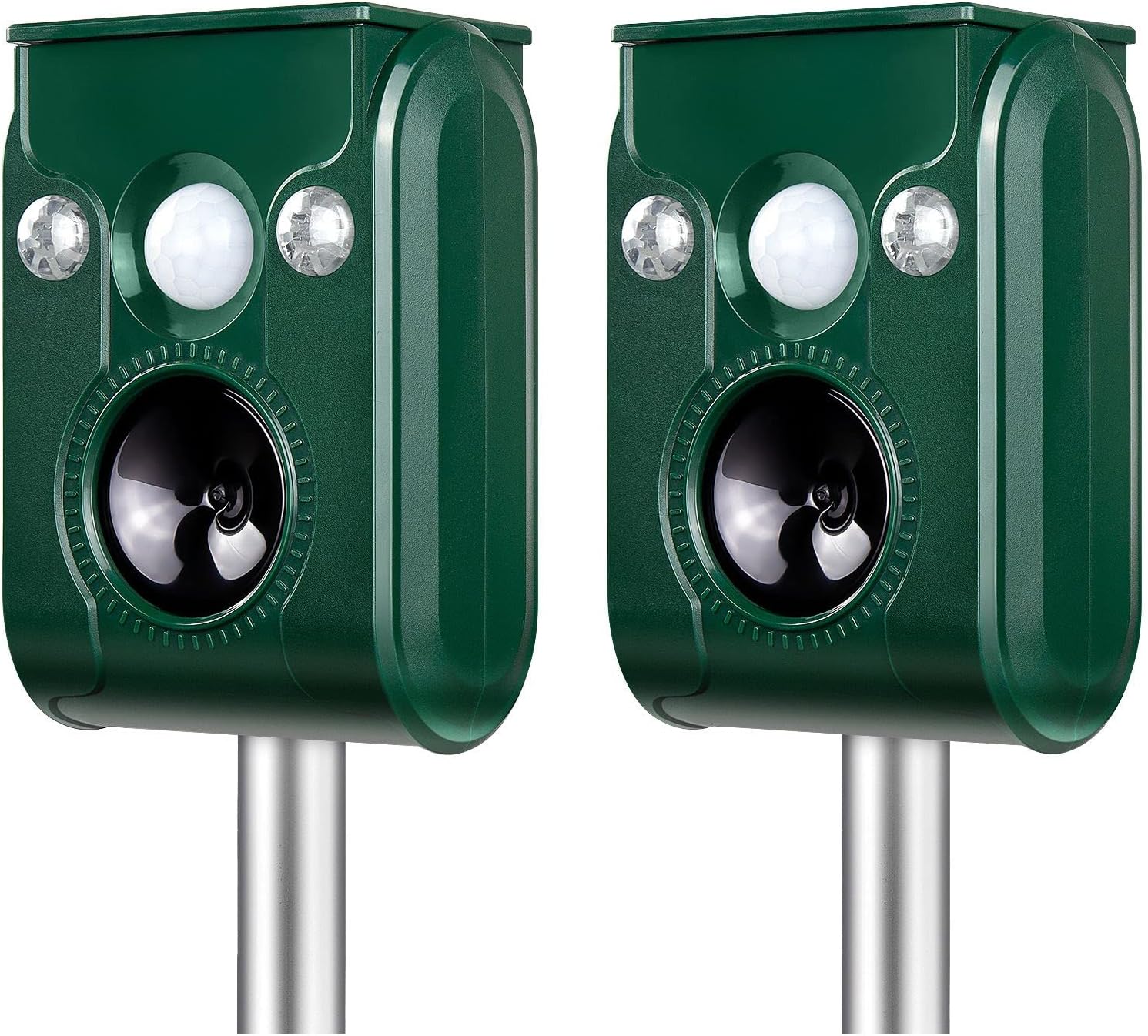
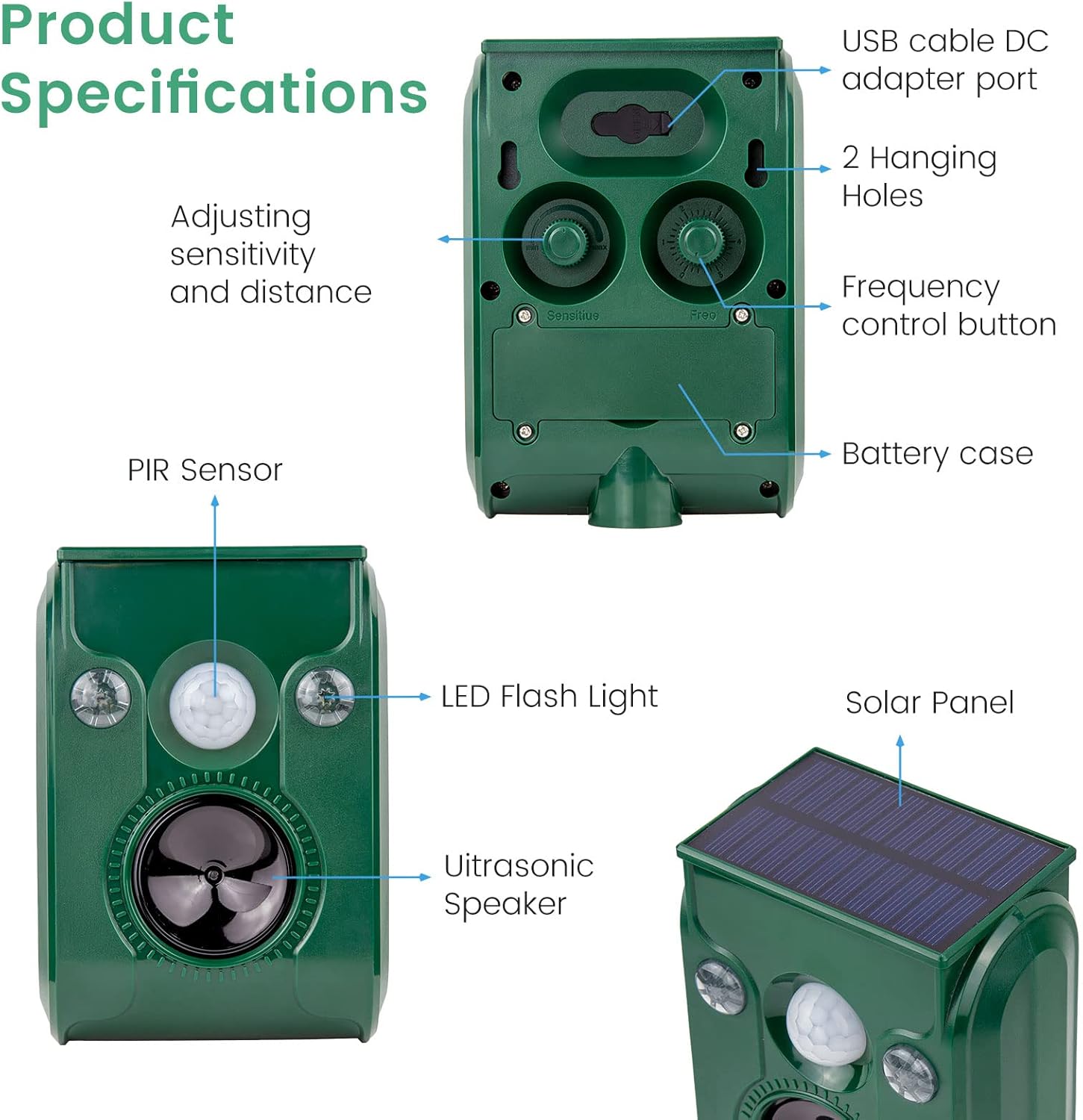
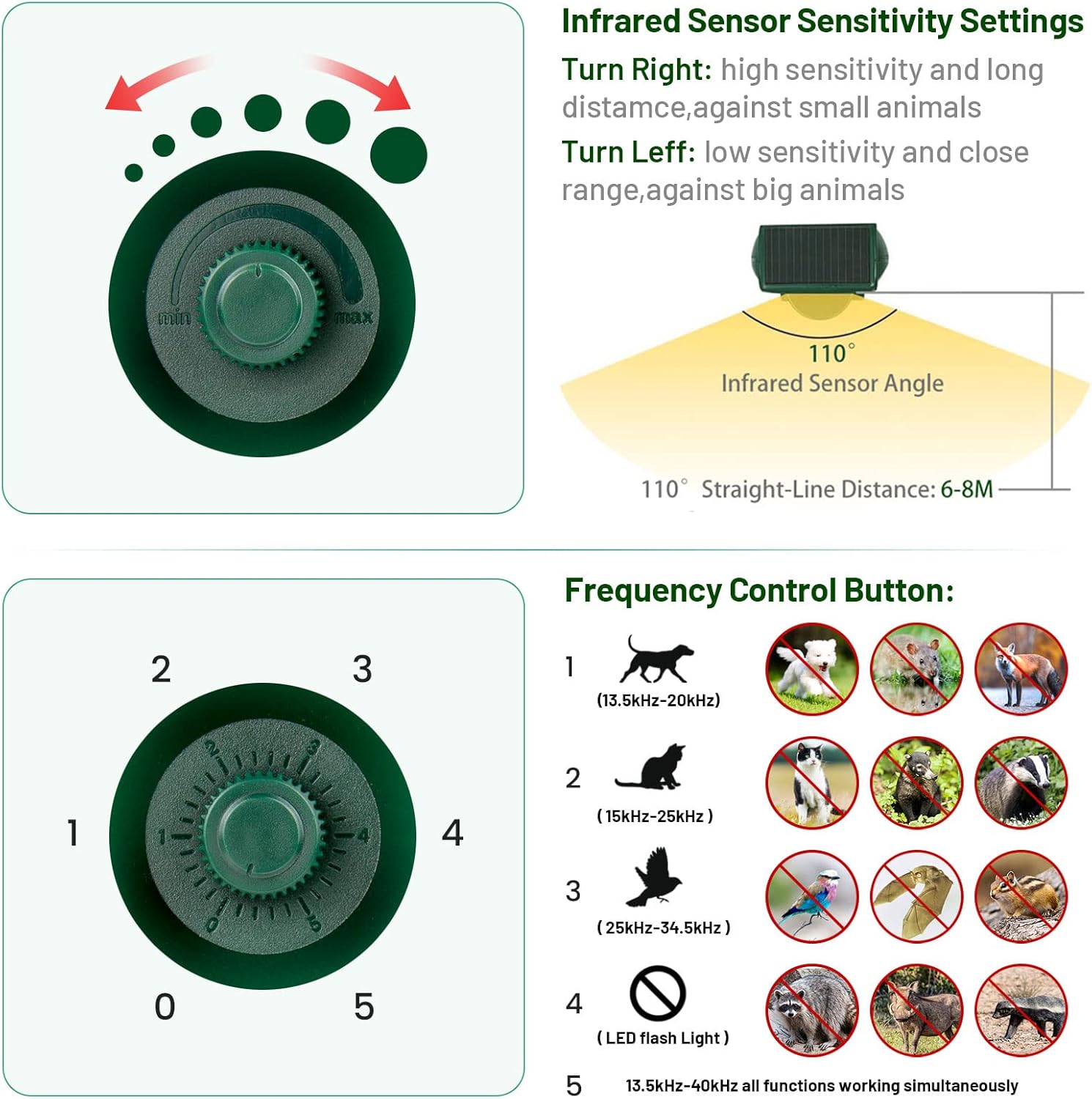
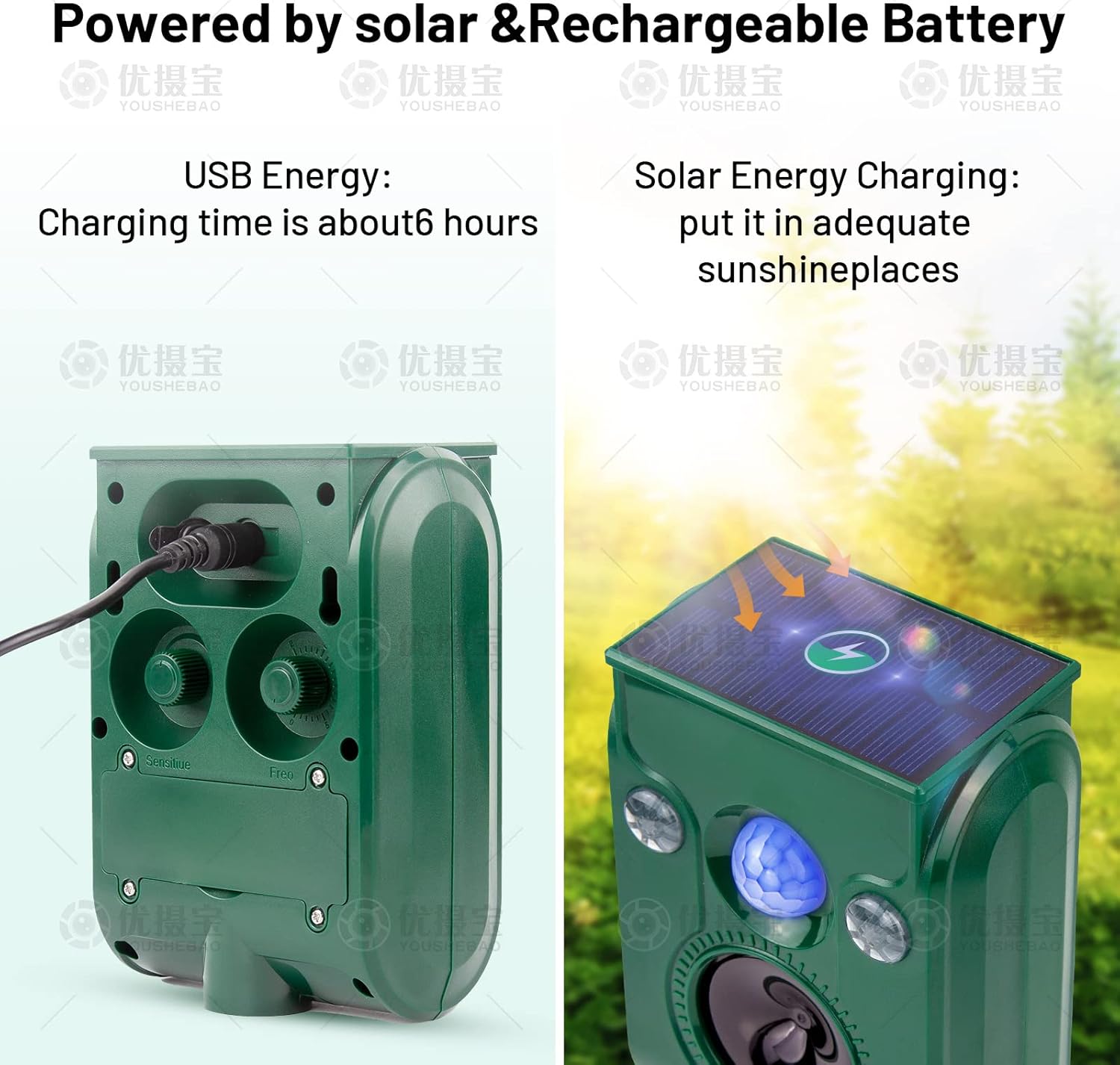
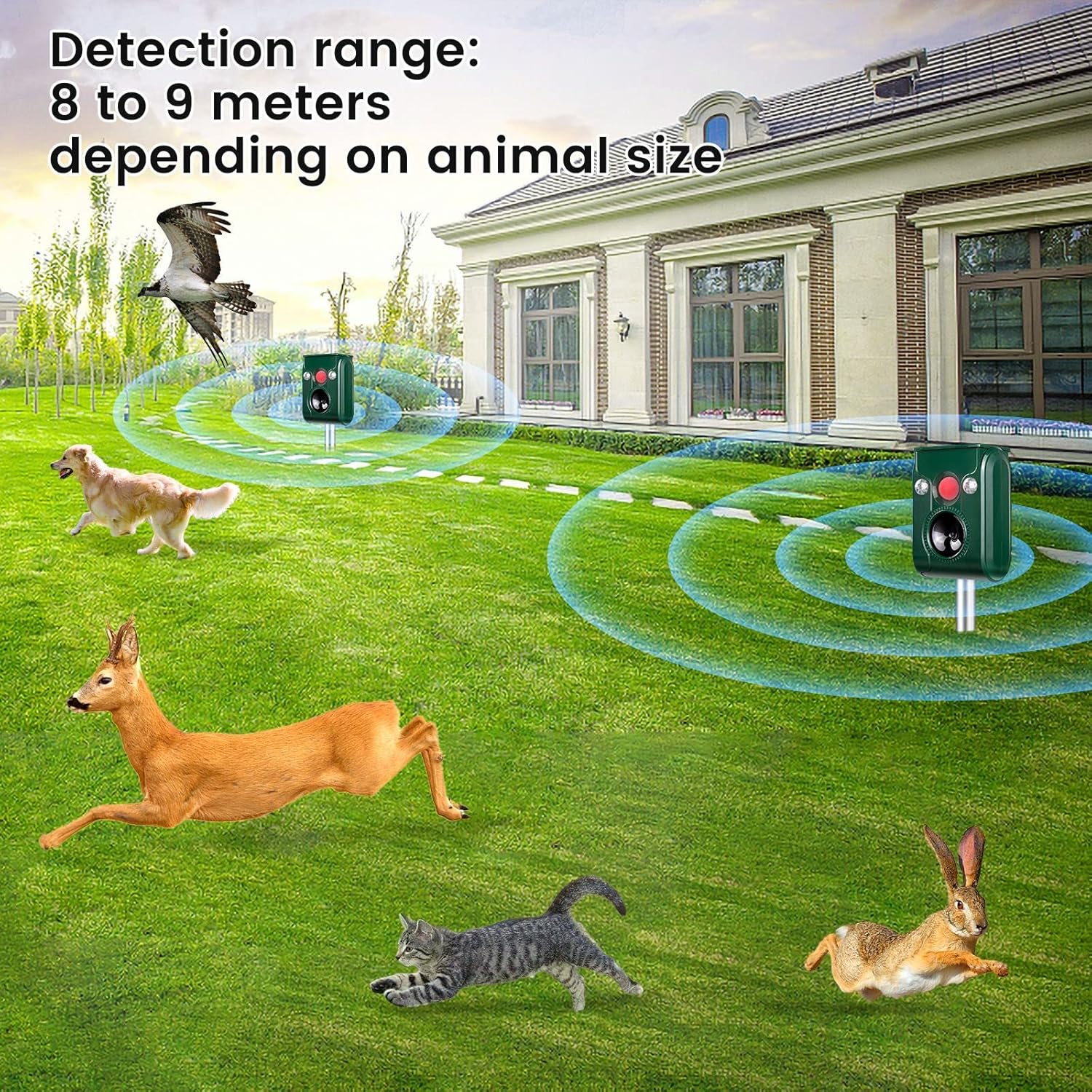
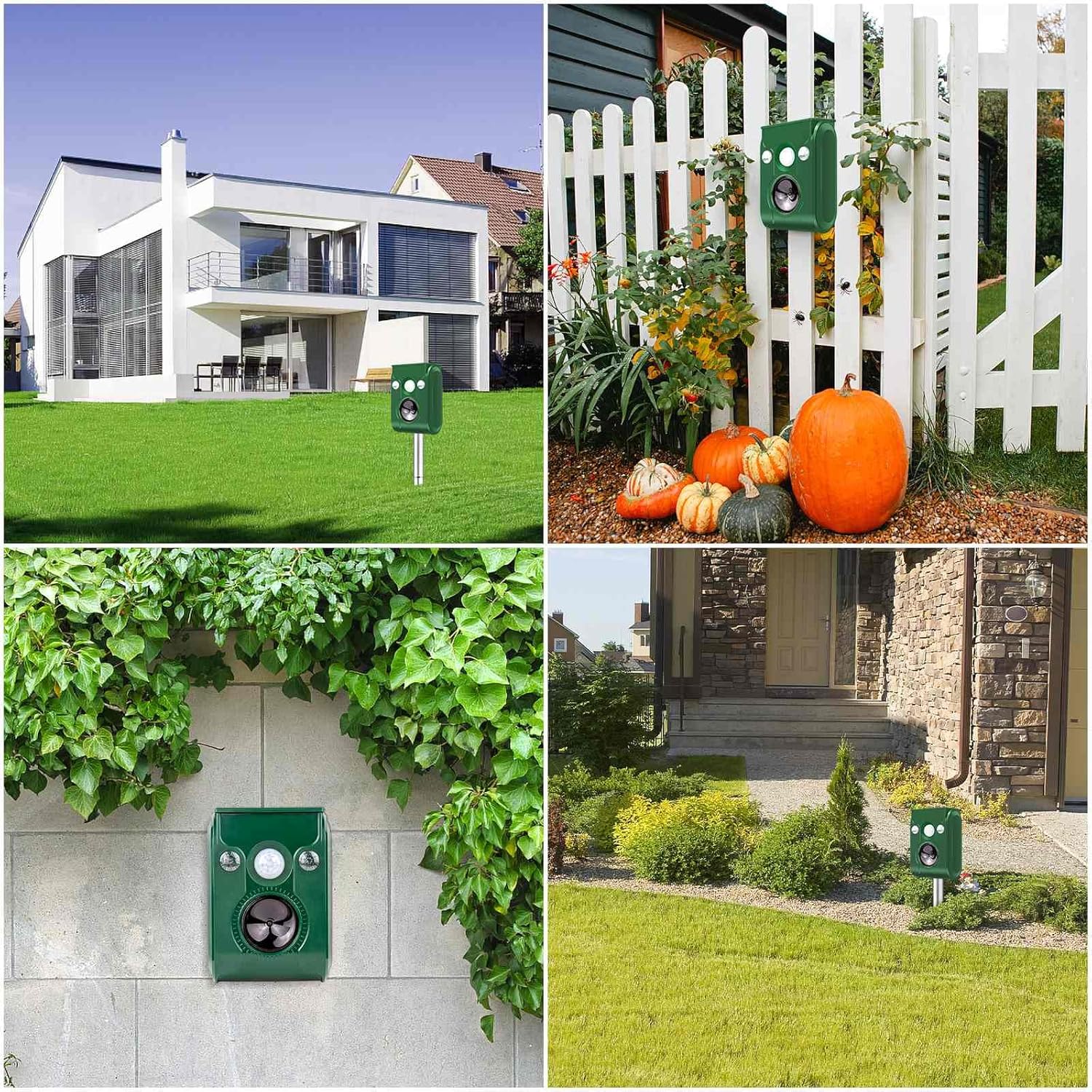
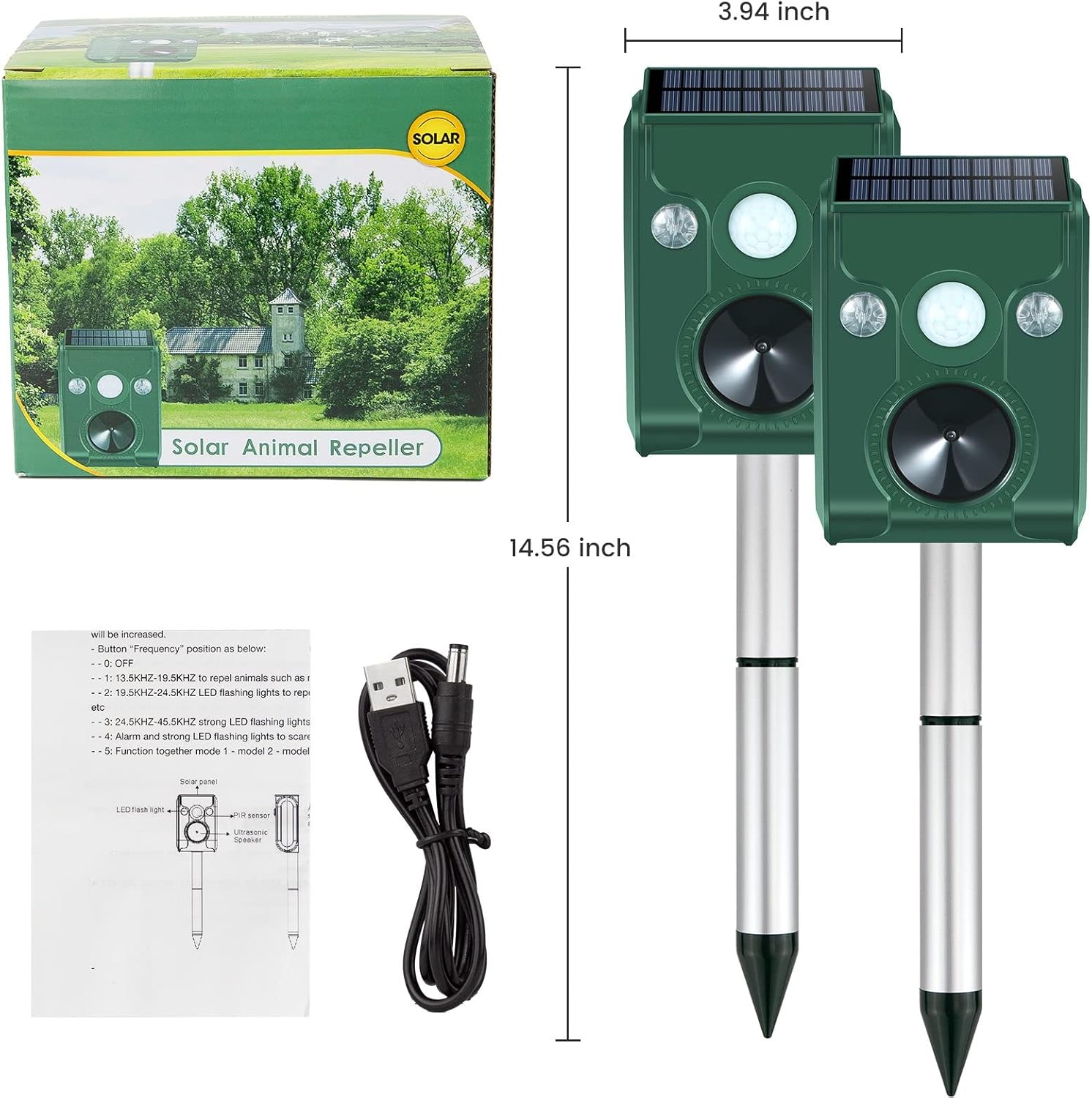
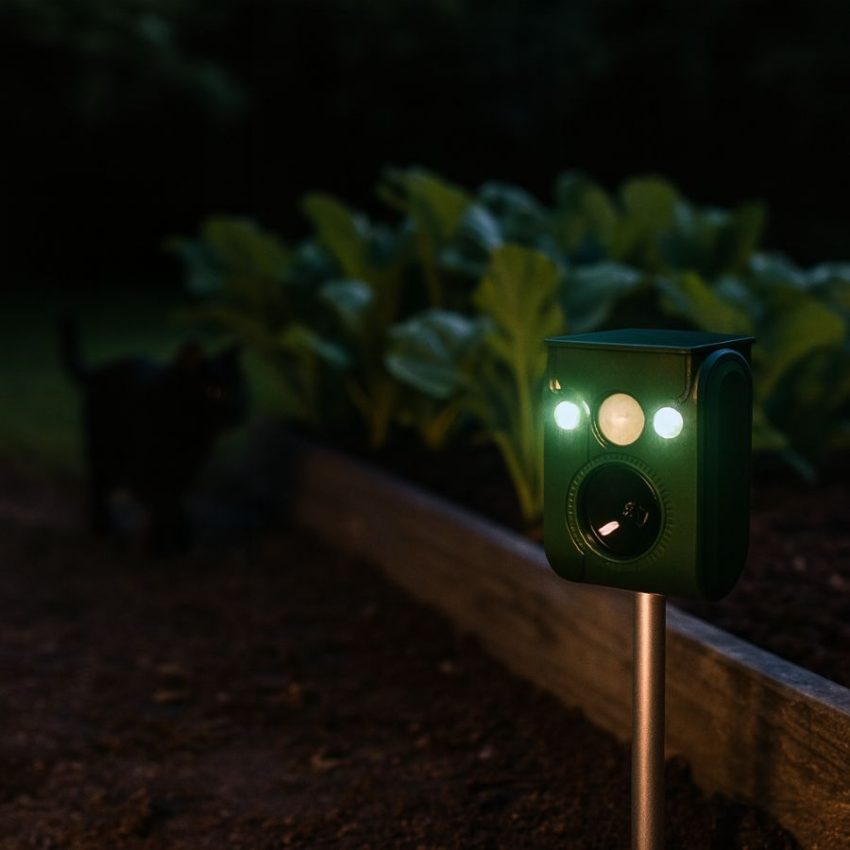
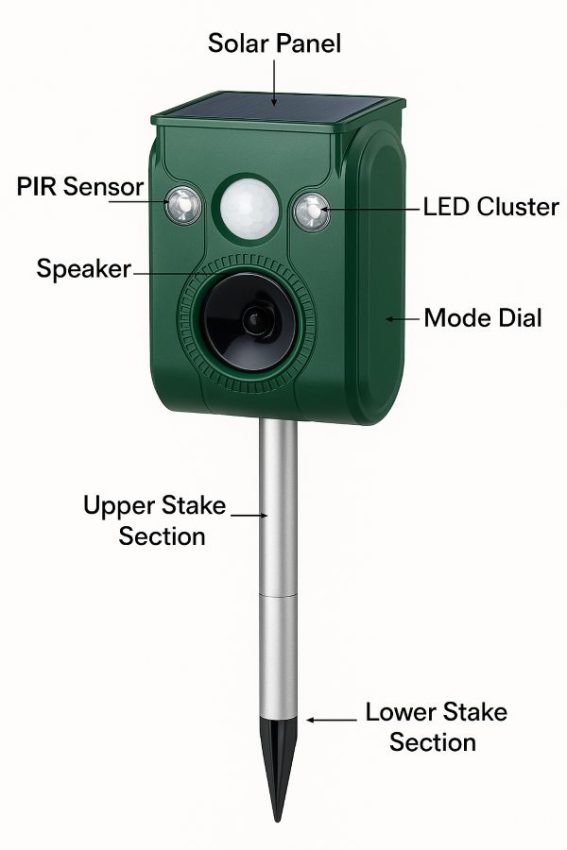
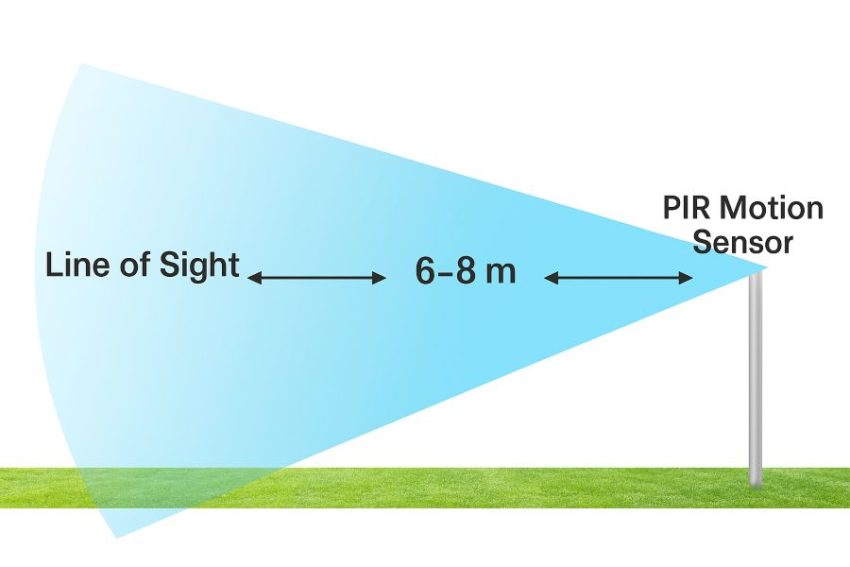
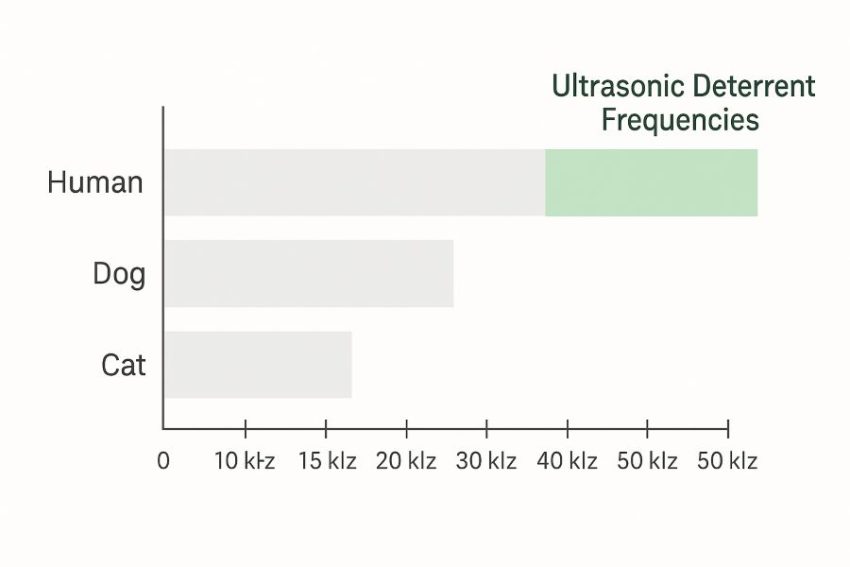
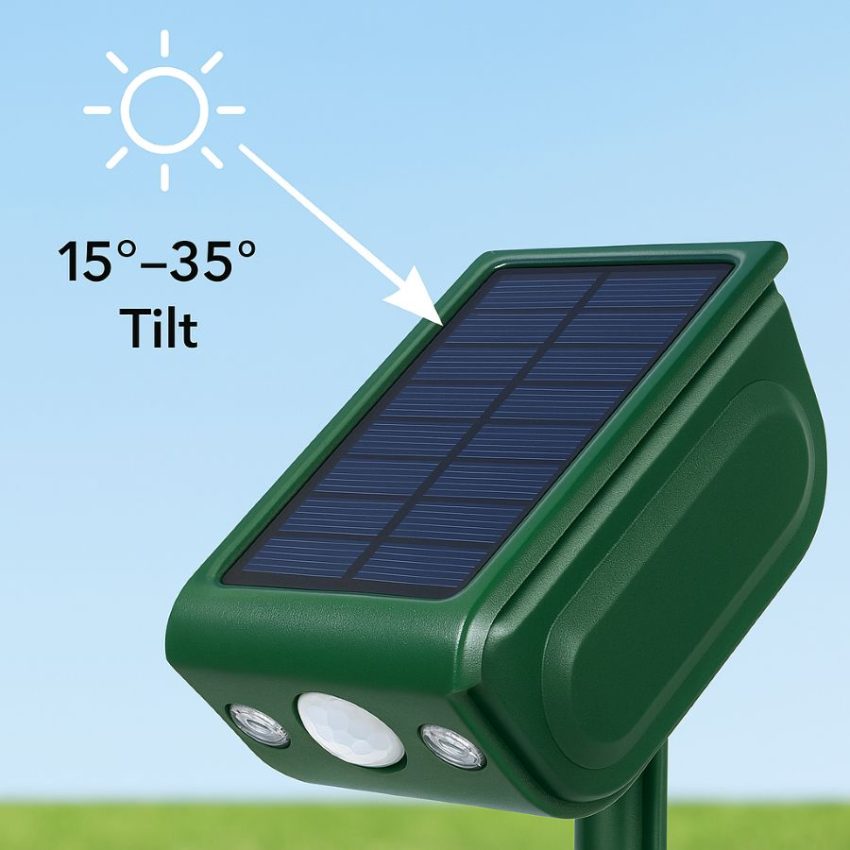
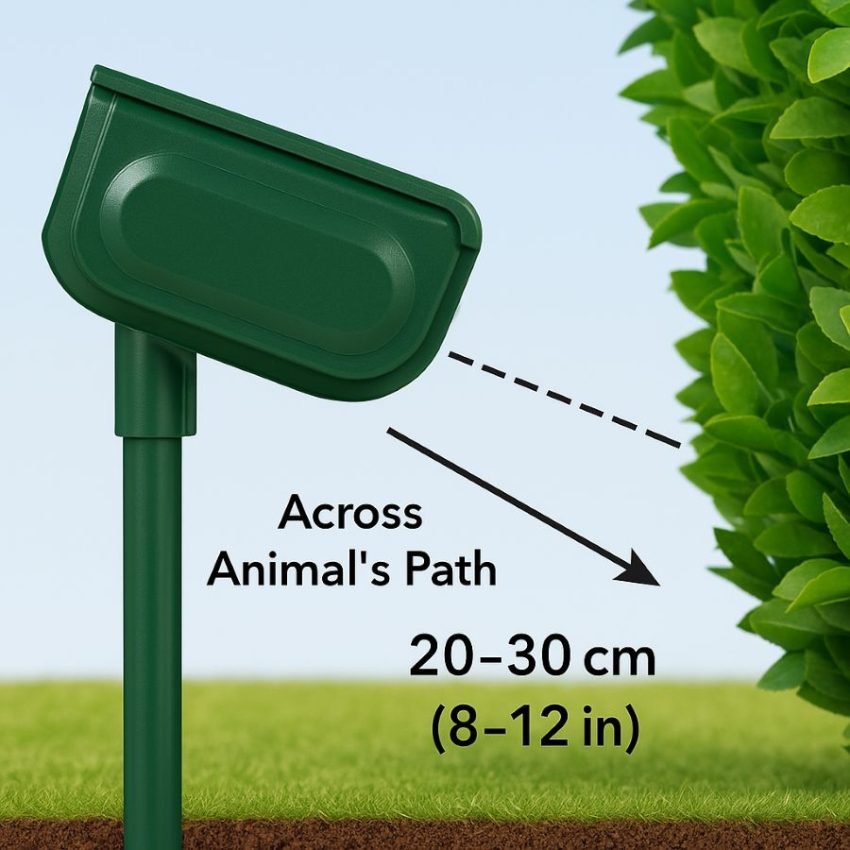
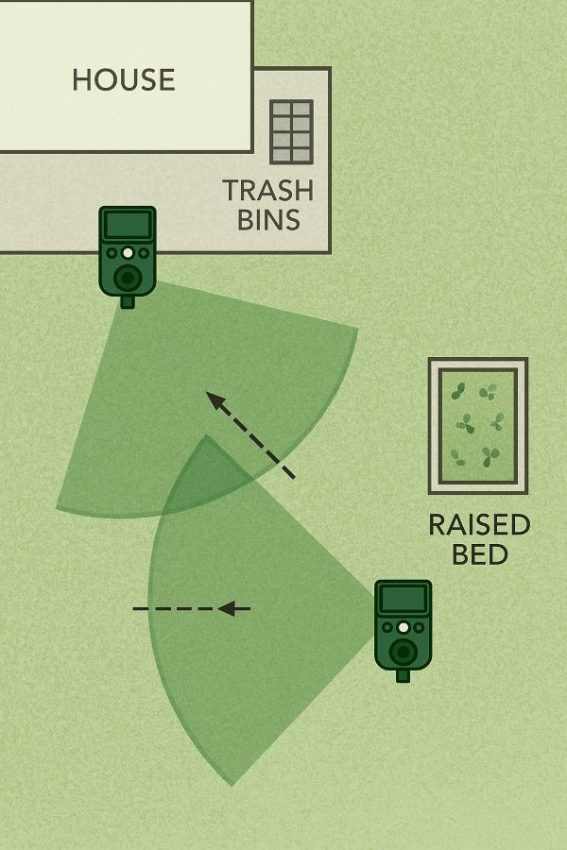
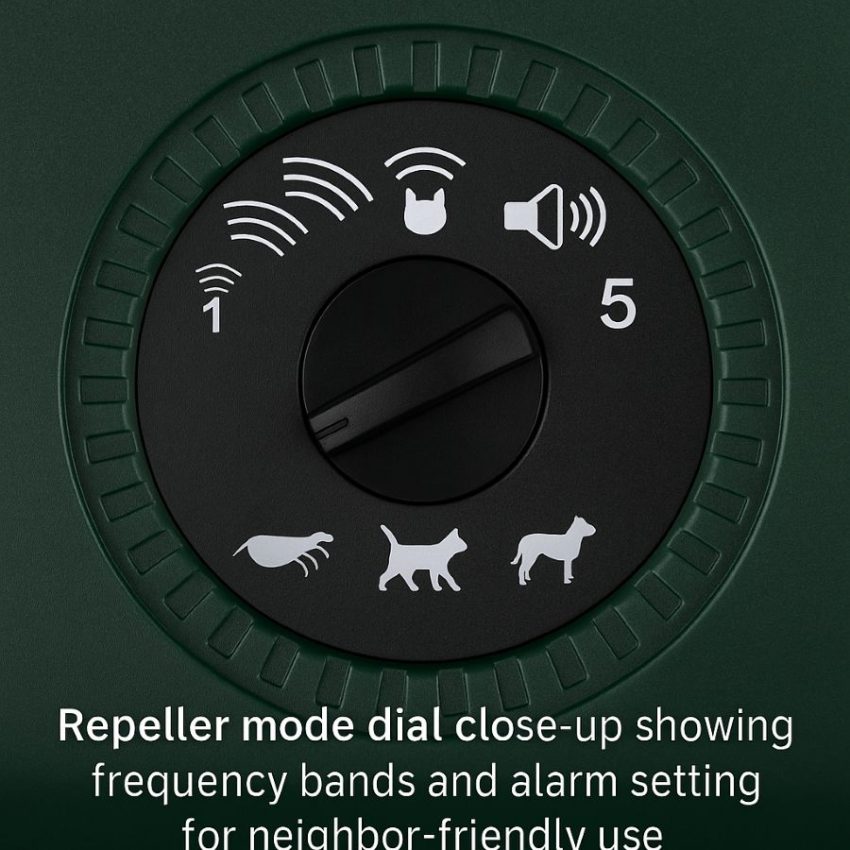
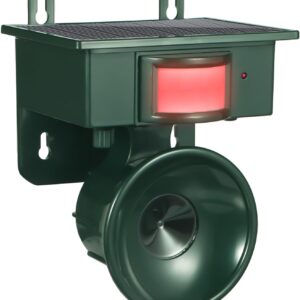
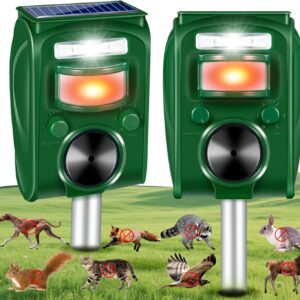
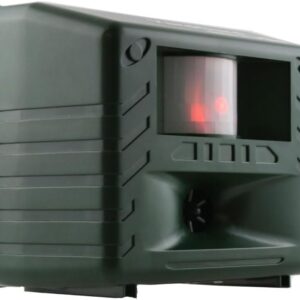
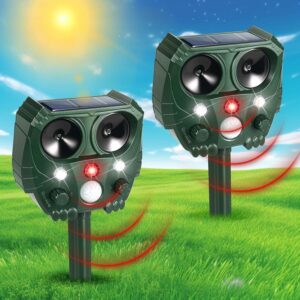
Reviews
There are no reviews yet.